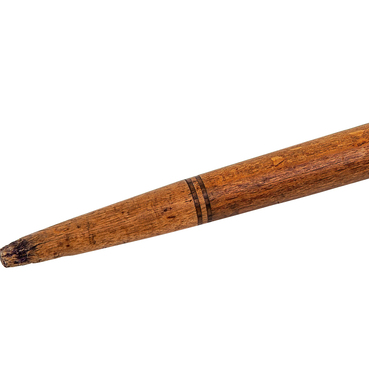The desk presented in the exhibition belonged to Majit Gafuri. It was at this desk that the first national poet of Bashkortostan wrote many famous works, such as the novella ‘The Black-faced’. The work devoted to the fate of women in the Islamic world was first published in Kazan in 1927 in the Tatar language. It describes real events that Gafuri witnessed while studying at a village school. In 1938, four years after Gafuri’s death, the Bashkir Drama Theater staged a play with the same name based on the story.
Gafuri wrote another famous work — the story ‘The Steps of Life’ — in the house, where a memorial museum is situated nowadays. It touches upon a theme that was extremely relevant for the Soviet literature of the 1920s — the emergence of class consciousness. The protagonist of the story is a former peasant youth, a student of a scholastic Tatar-Bashkir school, who is forced to become a soldier in the Tsar army. Gradually his discontent with the existing situation grows and he becomes a Bolshevik revolutionary.
The story ‘On the gold mines of the poet’ is arranged in a similar way. Gafuri wrote it inspired by the work of Maxim Gorky: the artistic style of the story resembles Gorky’s ‘My Universities’. In his autobiographical work, Gafuri describes the hard life of workers at the gold mines of the largest Tatar capitalists, the Rameyev brothers. In the years of political persecution, the poet worked in the mines and knew well what he was writing about.
The aesthetics of labor, the growth of revolutionary sentiment, and the construction of a new world — these themes always worried Majit Gafuri. He knew well the features of his characters and the difficulties they had to face. Being a pupil of a madrasa, a Muslim school, Gafuri found himself without parental care. Having no personal means, he was forced to work. These circumstances of life largely determined his work. In his stories, the poet strove for simplicity of narration and realistic images. He wanted his works to be understandable to any reader, regardless of the level of education.
Gafuri wrote another famous work — the story ‘The Steps of Life’ — in the house, where a memorial museum is situated nowadays. It touches upon a theme that was extremely relevant for the Soviet literature of the 1920s — the emergence of class consciousness. The protagonist of the story is a former peasant youth, a student of a scholastic Tatar-Bashkir school, who is forced to become a soldier in the Tsar army. Gradually his discontent with the existing situation grows and he becomes a Bolshevik revolutionary.
The story ‘On the gold mines of the poet’ is arranged in a similar way. Gafuri wrote it inspired by the work of Maxim Gorky: the artistic style of the story resembles Gorky’s ‘My Universities’. In his autobiographical work, Gafuri describes the hard life of workers at the gold mines of the largest Tatar capitalists, the Rameyev brothers. In the years of political persecution, the poet worked in the mines and knew well what he was writing about.
The aesthetics of labor, the growth of revolutionary sentiment, and the construction of a new world — these themes always worried Majit Gafuri. He knew well the features of his characters and the difficulties they had to face. Being a pupil of a madrasa, a Muslim school, Gafuri found himself without parental care. Having no personal means, he was forced to work. These circumstances of life largely determined his work. In his stories, the poet strove for simplicity of narration and realistic images. He wanted his works to be understandable to any reader, regardless of the level of education.



